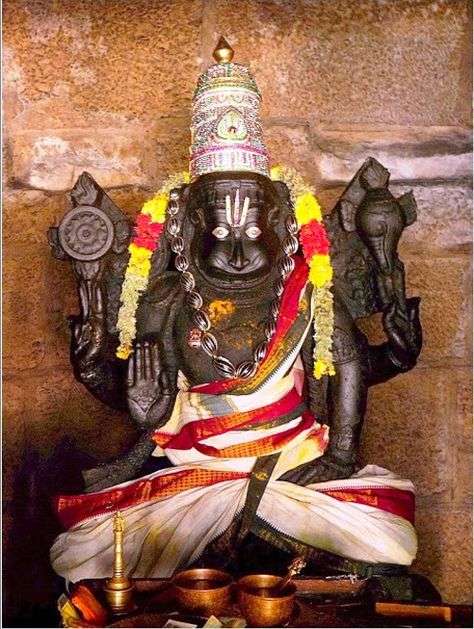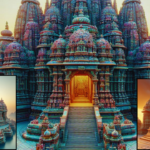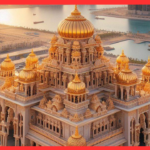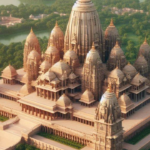Unraveling the History, Legends, and Spiritual Significance of Ahobilam. Ahobilam, also known as Ahobalam, is a place steeped in divinity and history, located in the Nallamala Hills of Andhra Pradesh, India. It is one of the most sacred pilgrimage sites for devotees of Lord Narasimha, an incarnation of Lord Vishnu with the body of a man and the head of a lion. This article delves into the rich history, legends, and spiritual significance of Ahobilam, where Lord Narasimha is believed to have manifested to protect His devotee, Prahlada.
Historical Overview of Ahobilam
The history of Ahobilam is as ancient as it is captivating. This sacred site finds mention in various ancient texts and inscriptions. The Nallamala Hills, where Ahobilam is situated, has been a retreat for saints, sages, and spiritual seekers for centuries.
Ahobilam gained significant prominence during the reign of the Vijayanagara Empire. The Vijayanagara rulers, particularly King Krishnadevaraya, were ardent devotees of Lord Narasimha. During their rule, they contributed to the construction and development of temples in Ahobilam, solidifying its status as a revered pilgrimage destination.
Legends and Mythology
The legends surrounding Ahobilam are deeply entwined with the divine manifestations of Lord Narasimha and the devotion of Prahlada, the young son of the demon king Hiranyakashipu.
Hiranyakashipu and Prahlada:
The most famous legend associated with Ahobilam is the story of Prahlada and his demon father Hiranyakashipu. Hiranyakashipu\’s tyrannical rule led him to seek immortality. However, his son Prahlada remained devoted to Lord Vishnu. When Hiranyakashipu learned of Prahlada\’s devotion, he subjected him to numerous trials, including attempts to kill him. But each time, Lord Narasimha emerged to protect Prahlada.
Nine Forms of Narasimha:
Ahobilam is believed to be the place where Lord Narasimha manifested in nine different forms to protect Prahlada and destroy Hiranyakashipu. These nine forms include Ahobalam, Jwala Narasimha, Malola Narasimha, Kroda Narasimha, Karanja Narasimha, Bhargava Narasimha, Yogananda Narasimha, Chatravata Narasimha, and Pavana Narasimha.
Bhargava Narasimha: One of the most significant legends is the story of Bhargava Narasimha. According to the Puranas, Lord Vishnu assumed this form to annihilate the demon king Hiranyaksha. This event is commemorated at the famous Ahobilam temple complex, where the Bhargava Narasimha shrine is located.
Other Myths: Ahobilam is also associated with other legends, such as the story of a devotee who was saved from a serpent by Lord Narasimha, the tale of how Lord Narasimha retrieved His beloved idol from the bottom of a river, and many more.
The Sacred Temples of Ahobilam
Ahobilam is renowned for its numerous temples, each dedicated to a different form of Lord Narasimha. Here are some of the prominent temples within the complex:
Ahobalam: The main temple of Ahobilam is where Lord Ahobala Narasimha is worshipped. It is considered the primary shrine and is visited by thousands of pilgrims every year.
Prahlada Varada Narasimha Temple: This temple is dedicated to Lord Narasimha granting blessings to Prahlada, the epitome of devotion. It\’s believed that Lord Narasimha appeared here to protect Prahlada.
Malola Narasimha Temple: This shrine is dedicated to Lord Malola Narasimha and features a unique form of the Lord, often depicted as embracing the goddess Lakshmi. The word \”Malola\” translates to \”the beloved of Lakshmi.\”
Jwala Narasimha Temple: Jwala Narasimha represents the fiery form of the Lord. It\’s associated with the legend of Lord Narasimha tearing apart Hiranyakashipu.
Kroda Narasimha Temple: This temple is dedicated to Lord Kroda Narasimha, symbolizing the wrathful form of the Lord when He emerged to slay the demon Hiranyakashipu.
Yogananda Narasimha Temple: Lord Yogananda Narasimha, depicted in a yoga posture, represents the meditative form of the Lord.
The Spiritual Significance of Ahobilam
For devotees of Lord Narasimha, Ahobilam is a sacred place for worship, meditation, and spiritual introspection. The profound significance of Ahobilam extends to various aspects:
Protection and Blessings: Devotees come to Ahobilam seeking the Lord\’s protection and blessings, much like how Lord Narasimha protected Prahlada. It is a place of refuge for those facing adversities.
Devotion and Surrender: The legends of Prahlada and Lord Narasimha exemplify the importance of unwavering devotion and complete surrender to the divine. Ahobilam serves as a reminder of these virtues.
Pilgrimage and Inner Transformation: Embarking on a pilgrimage to Ahobilam is not just a physical journey; it\’s a spiritual one. Pilgrims often undergo inner transformation, seeking spiritual growth and enlightenment.
Cultural Heritage: Ahobilam stands as a symbol of India\’s rich cultural and religious heritage. The temples, rituals, and practices here are part of the country\’s ancient traditions.
The Wildlife Sanctuary
The Nallamala Hills surrounding Ahobilam also boast a rich biodiversity. The Temple Wildlife Sanctuary is home to various flora and fauna, including tigers, leopards, elephants, and a wide range of bird species. Pilgrims and nature enthusiasts visiting Ahobilam can explore this pristine sanctuary, appreciating the beauty of the natural world while connecting with the divine.
Ahobilam temple timings:
| Ahobilam Temple | Opening Time | Closing Time |
| Upper Ahobilam Temple (Eguva) | 7:00 AM | 7:00 PM |
| Lower Ahobilam Temple (Diguva) | 6:30 AM | 8:00 PM |
| Lunch Gap ( All Temples) | One-hour | One-hour |
Conclusion: A Journey into the Divine
Ahobilam is a place where spirituality meets history, devotion meets legends, and natural beauty complements cultural richness. It is not just a pilgrimage site but a portal to another realm, where the divine presence of Lord Narasimha is felt at every step.
This remains an embodiment of unwavering belief in the protective and loving embrace of Lord Narasimha.






